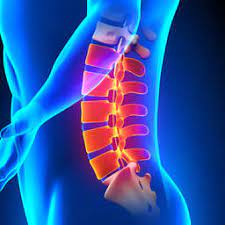The Science of Pain: Understanding the Mechanics Behind Your Body’s Alarms

First of all,
Pain is a universal experience, serving as a warning signal that something is amiss in our bodies. From a mild ache to intense agony, pain can vary widely in its intensity and duration. However, behind this seemingly straightforward sensation lies a complex interplay of biological processes, neural networks, and psychological factors. In this article, we delve into the science of pain, unraveling the intricate mechanisms that underpin our body’s alarm system.
The Nature of Pain:
Pain is more than just a physical sensation; it’s a multifaceted phenomenon influenced by numerous factors. At its core, pain serves a crucial protective function, alerting us to potential threats and prompting actions to avoid harm. Whether it’s the sharp sting of a paper cut or the dull throb of a headache, pain prompts us to take notice and respond accordingly.
Pain is one of the body’s most powerful alarm systems, signaling danger and prompting protective responses. But what exactly happens in the body when we experience pain? Let’s delve into the science of pain to understand the intricate mechanics behind this universal sensation.
The Mechanics of Pain:
The experience of pain begins with the activation of specialized nerve fibers known as nociceptors. These sensory receptors are scattered throughout the body and respond to various harmful stimuli, including mechanical pressure, extreme temperatures, and chemical irritants. When tissue damage occurs, nociceptors send electrical signals along nerve fibers to the spinal cord and brain, where the sensation of pain is perceived.
Neurotransmitters and Pain Pathways:
Within the central nervous system, pain signals are relayed and processed through complex neural networks. Key neurotransmitters, such as substance P and glutamate, play crucial roles in amplifying or dampening pain signals at various stages of processing. Additionally, the brain’s interpretation of pain can be influenced by emotional and psychological factors, leading to variations in pain perception among individuals.
Chronic Pain and Maladaptive Changes:
While acute pain serves a protective function, chronic pain represents a maladaptive response that persists long after the initial injury or illness has healed. In conditions such as fibromyalgia, neuropathy, and chronic low back pain, the nervous system undergoes profound changes that amplify pain signals and disrupt normal sensory processing. These alterations can lead to a cycle of persistent pain, emotional distress, and impaired quality of life.
Chronic pain, which persists beyond the normal healing time, involves complex changes in the nervous system, including sensitization of nociceptors and alterations in pain processing pathways. It often requires a multidisciplinary approach for effective management, including medications, physical therapy, psychological interventions, and lifestyle modifications.
The Role of Inflammation:
Inflammation is a common trigger for pain, serving as the body’s response to tissue injury or infection. During the inflammatory process, immune cells release cytokines and other signaling molecules that sensitize nociceptors, leading to heightened pain sensitivity. While inflammation is a necessary step in the healing process, excessive or prolonged inflammation can exacerbate pain and contribute to chronic conditions such as arthritis and inflammatory bowel disease.
Pain Management Strategies:
Given the complex nature of pain, effective management often requires a multifaceted approach. Traditional pain-relief methods, such as over-the-counter analgesics and prescription medications, target various aspects of the pain pathway to provide relief. However, complementary therapies, including acupuncture, massage, and cognitive-behavioral therapy, offer alternative approaches for pain management by addressing psychological and emotional factors.
The Future of Pain Research:
As our understanding of pain continues to evolve, researchers are exploring innovative approaches to pain management and treatment. Advances in neuroscience, genetics, and pharmacology hold promise for developing targeted therapies that address the underlying mechanisms of pain with greater precision. Additionally, emerging technologies, such as virtual reality and biofeedback, offer new avenues for modulating pain perception and improving patient outcomes.
Advances in neuroscience have deepened our understanding of pain mechanisms and paved the way for innovative approaches to pain management. From targeted drug therapies to mind-body interventions, researchers continue to explore new avenues for alleviating pain and improving the quality of life for millions of people worldwide.
In summary:
The science of pain is a complex and dynamic field that encompasses a wide range of biological, psychological, and social factors. By unraveling the intricate mechanisms behind our body’s alarm system, researchers are gaining insights into the nature of pain and developing new strategies for its management and treatment. As our understanding continues to deepen, the hope is that fewer individuals will suffer needlessly and that effective relief will become more accessible to all.








